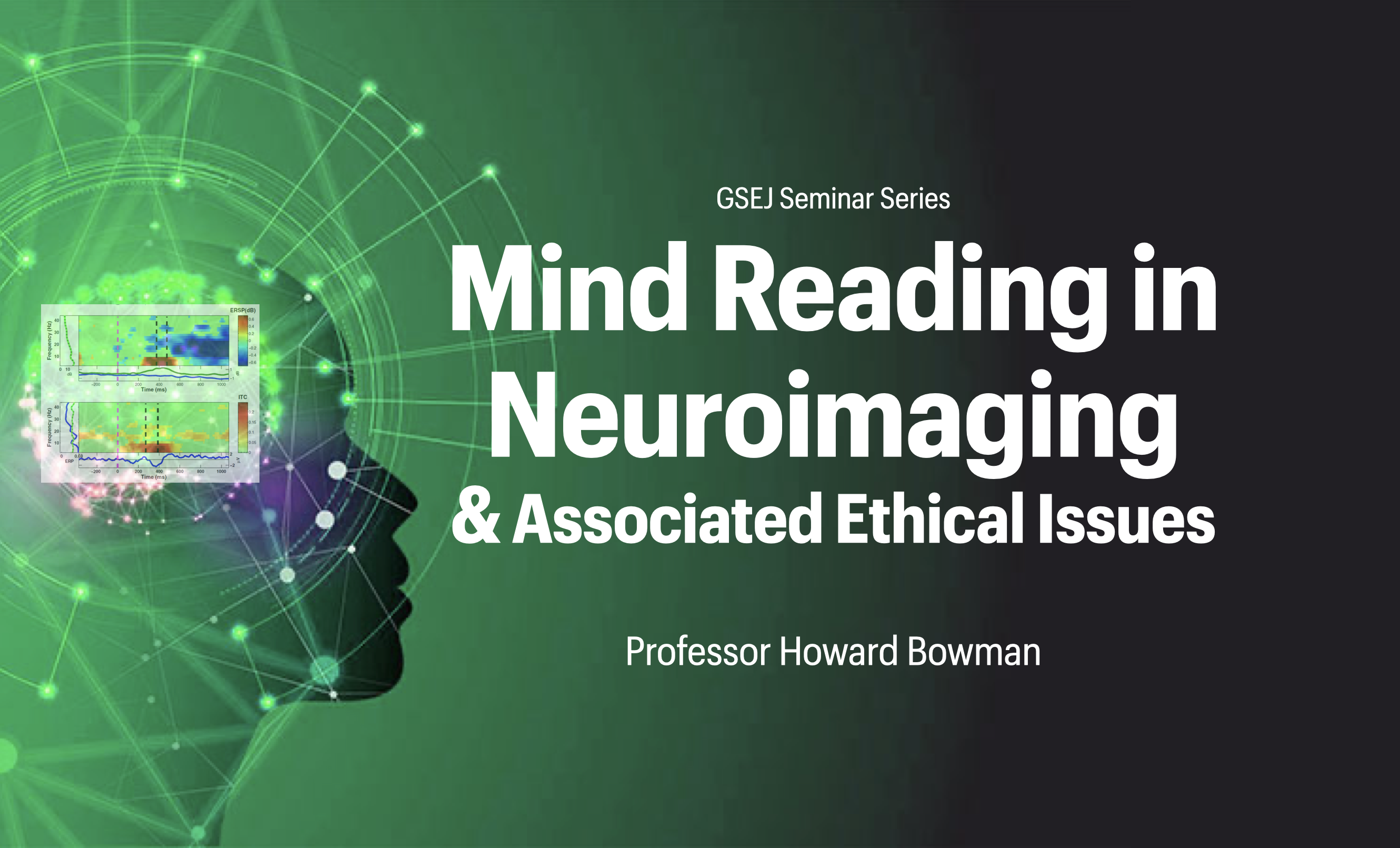On 23 November, GSEJ founding member and the inventor of the Fringe-P3 method, Prof Howard Bowman shares his work on lie detection and mind reading and discusses ethical implications.
Time: 12:00-13:30 Wednesday 23 November
Venue: This is a hybrid event. You can either follow the discussion on Zoom (please see evenbrite link ) or attend in person (Templeman Digital Classroom 5 (TS5), University of Kent’s Canterbury campus).. Please visit the Eventbrite link for registration
Abstract
As neuroimaging methods have become more effective, the use of them to read minds has come closer to practical reality. The seminar discusses efforts to develop lie-detectors using neuroimaging technology, including the largely abortive efforts to detect the lying brain state using fMRI and the more successful efforts to develop concealed knowledge tests using EEG. This will lead into Professor Bowman’s work to develop the Fringe-P3 method as a “fringe of awareness” concealed knowledge test. Efforts to read dreams with fMRI and decode memory recall using EEG and MEG and key ethical issues associated with developing this technology, especially those that arise from subliminal detection will also be discussed.
Speaker:
Howard Bowman, Professor of Cognitive Neuroscience in Psychology at the University of Birmingham and Professor of Cognition & Logic in Computing at the University of Kent. He is also Honorary Professor of Imaging Neuroscience at the Wellcome Centre for Human Neuroimaging, University College London. For the first half of his career, he worked in theoretical computer science; specific contributions were on decision procedures for temporal logics and process calculi in concurrency theory. More recently, he has worked in cognitive and clinical neuroscience, with particular focus on theories of temporal attention (e.g. the Simultaneous Type/ Serial Token model) and the role of oscillations in episodic memory formation (e.g. the Synch/deSynch model). He also has interests in methods development for neuroimaging, e.g. problems of small samples, and over-fitting of hyper-parameters in machine learning.
He is the inventor of the Fringe-P3 method, which combines presentation of stimuli on the fringe of awareness with detection of the brainwaves generated by conscious break-through (the P3). The method can be used to determine the stimuli that a participant finds salient, with one application being as a form of lie detector, called a concealed knowledge test, which is resistant to the standard means to confound a lie detection.


